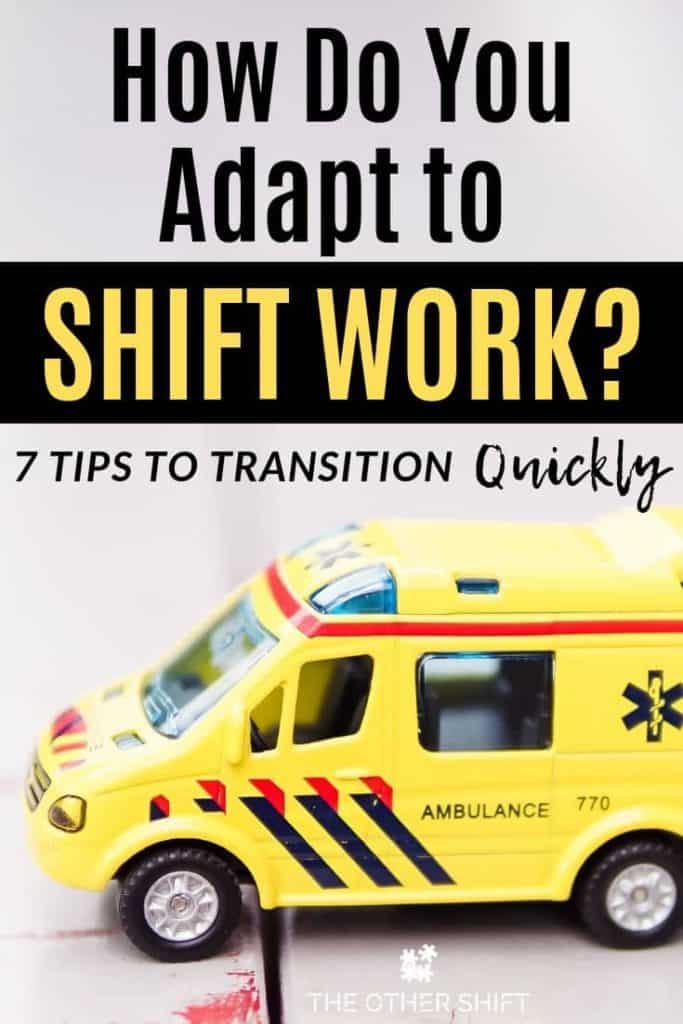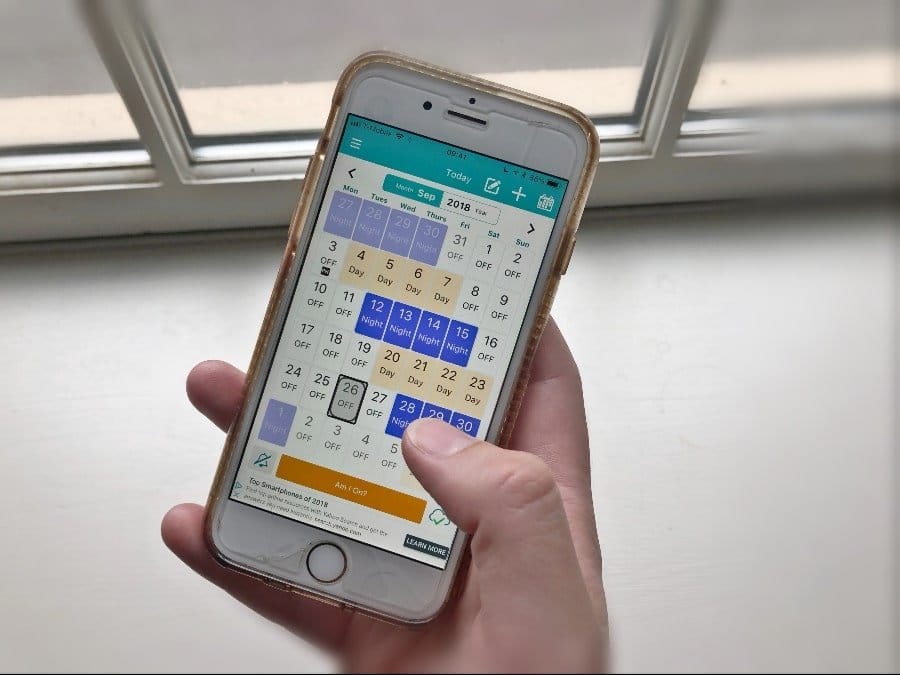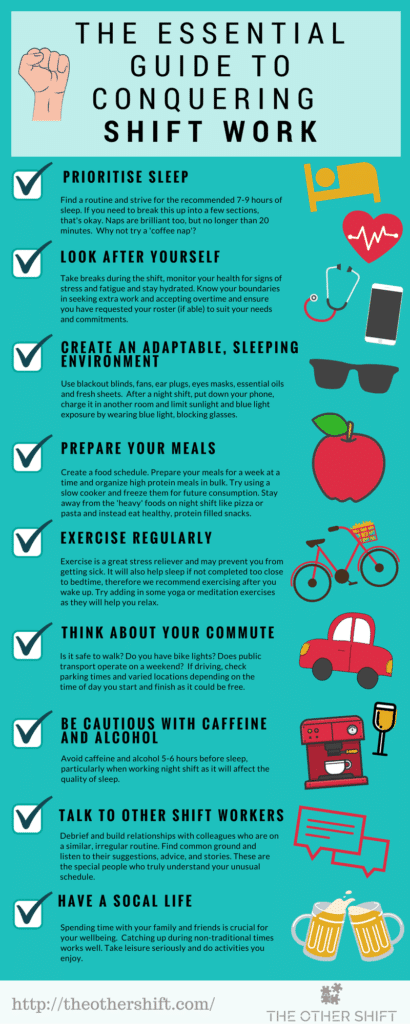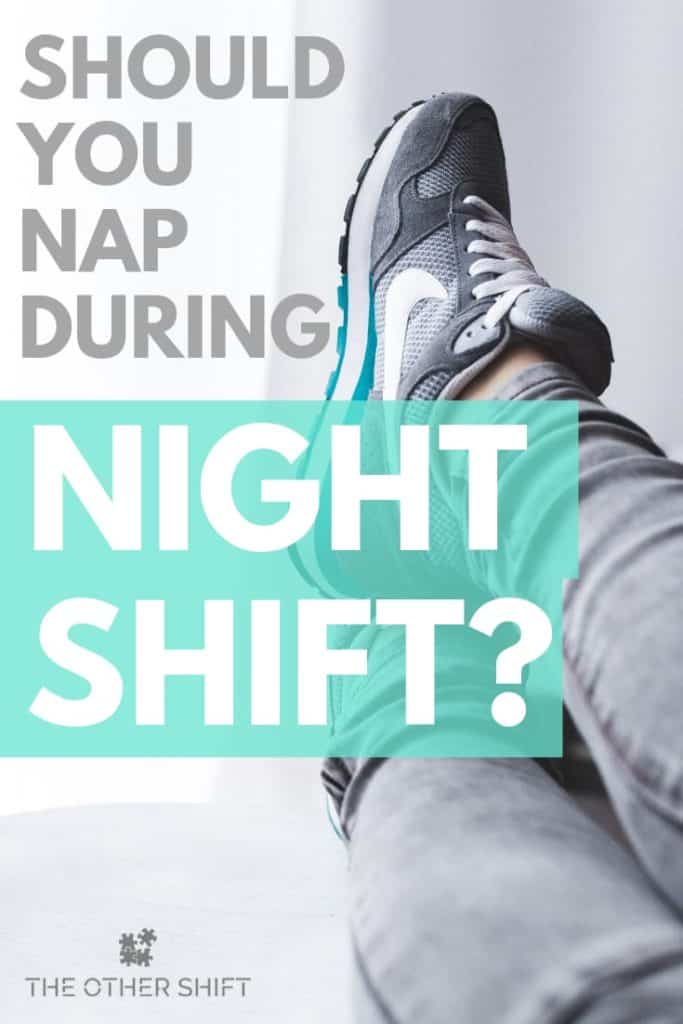Disclosure: This page may contain affiliate links, meaning we receive a commission if you decide to make a purchase through our links, but this is at no additional cost to you. Please read our disclosure and privacy statement for more info.
“I have never completed shift work before, can I really do this?”… “What happens if I can’t sleep during the day?” …“Am I going to lose all my friends who work 9-5?” When adapting to shift work your brain is likely buzzing with questions like this. We want to help you transition to shift work quickly and start your new “nontraditional life” with ease.

Throughout this post, we are going to give 7 tips to help you quickly adapt to the shift work lifestyle. Our bodies haven’t evolved enough yet to not get caught up in this shift working arrangement, however, this doesn’t mean it’s not possible to live a happy and healthy life as a shift worker.
1. Accept That Shift Work Life Looks Different
If you know a shift worker or have some idea of a shift work schedule, you know life will be… a little different.
You will be sleeping at odd times, eating when you’ve never eaten before and catching up with friends and family at times and locations you never thought you would.
While some think, “I could never do it,” shift work is VERY doable and even favored by many because you can get things done out of peak times. Read 13 Advantages of Shift Work for Employees to find out other reasons why shift workers prefer this lifestyle over the 9-5.
However, when adapting to shift work, it’s really important you take control of your social life and continue to do the things which make you happy.
It’s easy to get sucked up in the busy shift work routine and waste the time away from work. Burnout is real and we want you to avoid it as much as possible. Read Shift Work Burnout: Causes, Red Flags And How To Beat It
Social Life
If the rotating roster has you working weekends, you may miss the odd party or event. You don’t need to be a social recluse though. Read – Essential Guide to Working a Rotating Shift Schedule
Get on the front foot and do some organizing yourself, by booking catch up’s during non-traditional times. Breakfast before work or lunch dates midweek makes you the bright spot in a friend’s normal daily routine.
Do What Makes You Happy
Continue with hobbies or activities you enjoy.
Some fall into the trap of only sleeping and eating, particularly while on night shift, which has a negative impact on your headspace. We have been in this dark place and the trap is real!
Make time to see your friends in advance and involve yourself in activities which make you feel good such as sports, arts and crafts or take a course and learn something new.
Read: 7 Essential Night Shift Tips: Making the Impossible a Reality
2. Rule Your Roster
There is enormous freedom in working a shift work schedule which many shift workers either don’t realize or care to learn the process to benefit themselves and their families.
If you are able to request your roster, make it the priority. Learn how to manipulate your schedule early and be proactive about requesting your shifts.
It enables you to plan a life you want around your family and social events ensuring you don’t miss the important stuff.
I should mention, not every shift worker is able to request their roster or have any say in what it looks like. These staff members may work the permanent night shift or they work a set rotating roster; working a particular shift for a set period of time before they swap onto something else.
If you fall into this boat, you may be able to “swap” or discuss your roster with a manager which ties in nicely with your family and other commitments. My motto is… there is no harm in asking.
Also, be aware of the roster lockout dates, and pop these in as a reminder in your diary or phone. You don’t want to miss these dates as taking adequate breaks is vital for your health and wellbeing.
For me, my roster is a BIG deal so I wrote a bunch of posts to help you organize yours:
- Roster: Your Shift Roster is the Most Powerful Tool you have as a Shift Worker
- Roster tips: Best Shift Work Roster Scheduling Tips
- Shifts: What Do The Terms 1st, 2nd And 3rd Shift Actually Mean?

3. Find a Sleep Routine Early
Until this point in your working life, you may have underestimated and taken sleep for granted, much like I did.
It wasn’t until I started working rotating shifts as a nurse that I truly appreciated just how vital sleep is for not only my health but my mood and waistline! (yeah, not getting enough sleep can make us fat…)
We were VERY interested in this topic and wrote two posts we think you’ll enjoy.
The first is called Is Night Shift Bad For You? 11 Truths Uncovered and it’s all about the impact of night shift, specifically sleep. We give you a heap of suggestions on how to maintain good health on the 3rd shift too.
The second is called 9 Shift Work Best Practices You’re Probably Not Doing which talks about how to get more sleep, plus a bunch of other shift working tips you could easily miss in the beginning by simply not being aware of them.
To get you started in establishing a sleep routine early, here is a list of ways you can start to prioritize sleep and kick-start your shift working life.
Be Positive About Day Time Sleep
Trying to sleep during “non-traditional” times can be challenging in the beginning.
But it’s not impossible to sleep for the recommended 7 – 9 hours if we are smart about it and we have a positive mindset to make it happen.
However, I am not silly enough to believe that sleep is easy for everyone because it’s not.
I would suggest that before you start the job or within the first few weeks of commencement, find a solution that works for you and seek advice about obtaining higher quality sleep if needed.
Here are a few posts to get you started:
- Medications: Insomnia And Shift Work Sleep Disorder Medication Review
- Can’t Sleep: Can’t Sleep After Night Shift? 13 Weird Tips That Actually Work
- Shift Work Sleep Disorder: Shift Work Sleep Disorder (SWSD) – What Is It and How to Avoid It?
Just as a heads up, if you need to complete 7-9 hours sleep in a few different blocks for whatever reason, that’s okay too. Just make sure that if you are consciously breaking them up, you are able to fall back asleep quickly.
Using sleep aids (here are our favorites ) and wearing blue light blocking glasses during these few hours of “wakefulness” are great ways to keep your sleep hormones doing as they should…. helping you sleep.
) and wearing blue light blocking glasses during these few hours of “wakefulness” are great ways to keep your sleep hormones doing as they should…. helping you sleep.
By the way, if you’re struggling to fall asleep and you’ve been lying there for more than an hour, get up and do something like housework, washing the dishes or reading a book (with blue light blocking glasses
on) and try again.
Don’t just lay there for hours on end getting more and more frustrated and counting lost hours. It won’t help.
If reading helps you sleep and you need a new book that doesn’t wake up your significant other, take a look here – 5 Best Reading Book Lights That Will Help You Sleep. Also, you might want to take a look as what Amazon offers in the reading department.
Kindle Unlimited Membership Plans (click the image below to suss this deal out more) or have a browse through Amazon Audible. Try Audible and Get Two Free Audiobooks
(click the image below to suss this deal out more) or have a browse through Amazon Audible. Try Audible and Get Two Free Audiobooks
by clicking here.

What About Melatonin?
If you need to pop a melatonin tablet during these “crisis” times (eg, you have an early/1st shift and you can’t sleep) then do so.
Just make sure you take the lowest dose possible to prevent waking up feeling groggy. Read – My Top Tip for Taking Melatonin on Night Shift: Plus 10 More.
Prioritize Sleep
In the beginning, this was my biggest downfall. I prioritized Netflix, cleaning the house, watching movies and scrolling social media – not sleep.
And what a HUGE waste of precious sleeping time that was!
While winding down is very important, we can be smart about the duration and how we do it to make sure we are able to fall asleep quickly. My advice is to find a sleep routine early and stick to it as much as possible, despite working irregular shifts.
Try and do the same behaviors every single night/day before getting into bed. This allows your brain to make connections between a particular behavior and sleep, making the process a lot simpler.
Such behaviors include:
Wearing blue light blocking glasses (pictured above) in the 90 minutes before bed – see our favorites here and why we wear them

Night and Day Glasses 
- Having a warm shower
- Drinking non-caffeinated herbal tea like chamomile or peppermint
- Slow stretching or yoga
- Meditation
- Listening to meditative music – See a post we wrote titled Sleep Music Facts, Playlists and Songs for Insomnia Sufferers for various videos and Spotify playlists we use regularly to help us fall to sleep.
- Avoiding alcohol in the few hours before bed. Read our post titled, Is Surviving Night Shift with a Morning Beer a Good Idea? for more information.
- Not taking your phone to bed – crazy I know. Read this post for more information.
The most important piece of advice we can give is to establish a sleep routine early when adapting to shift work life
Make the Environment Favorable for Sleeping
Do you love your bed, mattress, sheets and pillow? If not, it’s time for an upgrade.
I’m not saying that to drain your bank account, but I mention this because you don’t need another distraction to stop you from falling asleep.
If your matress protector feels like a camping tarp and your pillow is hard as a rock, you’re not going to sleep well during the week and probably worse during the day if working nights.
On our shift work tools page here we show you our favorite pillow from Snuggle Peadic, but if it’s a new mattress you’re after, the Nolah Signature 12 Mattress is a great place to start looking.
Make Your Bedroom as Dark as Possible
I know this may seem crazy, but you need to aim for 100% blackout in your bedroom. Just shutting the drapes and allowing for the light to seep in won’t cut the mustard, particularly if you’re a light sleeper.
Why? Well, your sleep hormone melatonin NEEDS total darkness to do its job. If it detects any light there is a high chance you’ll have a tough time falling asleep.
There are a few options to make your room dark and almost “cave” like.
- Cover your windows with foil or black trash bags. While this can be effective they will fall down and look a little creepy in my opinion.
- Invest in some blackout blinds. The Original Blackout Pleated Paper Shade Black
 , via Amazon, is what we recommend because they are SO EASY to install due to being paper, but are very effective (and reasonability priced!)
, via Amazon, is what we recommend because they are SO EASY to install due to being paper, but are very effective (and reasonability priced!)
Just remember to clean the window area thoroughly (with alcohol) before the tape is applied to help it stick.
- Block out the remaining light with an eye mask which is comfortable and doesn’t fall off. In this post titled, Top Selling Eye Masks for Sleeping For Total Block-Out we chat about our favorites and give some great suggestions of non-traditional eye masks such as those with headphones. Very cool.
- Move your bedroom to a room in the house with limited windows and doors. Some shift workers I know bought a mattress and placed it in their basement. There is limited light down here and the temperature stays consistently cool. We should be aiming for temperatures between 60 and 67 degrees Fahrenheit for optimal sleep. (source)
Related posts:
- No sleep: 8 Useful Hacks For Surviving Night Shift With No Sleep
- Sleep aids: 10 Must Have Night Shift Sleep Aids for a Heavenly Sleep
- Alarm clocks: 7 Best Alarm Clocks For Night Shift Workers

Take Naps
We heavily recommend naps, ensuring they are no longer than 20 minutes. Why? Any longer and you can enter into a deeper stage of sleep and wake up feeling much worse.
This lethargy feeling in most cases lasts around 60 minutes.
The sleep researchers call this feeling sleep inertia and we talk about it more in a post we wrote titled Should You Nap During Night Shift? We also chat about the benefits of a longer sleep too. Click to find out the ultimate nap duration to boost your next shift when feeling tired.
Taking naps before you drive home after a busy shift is also an interesting discussion.
I know I personally fight the fatigue and I’m not proud of it. But I’m trying to change my ways to make the situation a lot safer for not only myself but also for other motorists on the road.
We wrote an entire post about driving home after night shift which you can check out here. This post was pretty fun to write because I thought I knew all the “tricks” in the book, but it seems I didn’t...
What About a Coffee Nap?
Have you heard about a coffee nap? I know it sounds a little backward but it’s a pretty neat concept we have used many times and it works a treat.
Read more about it in a post we wrote titled – Shift Workers Secret ‘Coffee Nap’ Revealed.
Get in Sync With Your Family and Housemates
Obviously, having a family on a 9-5 routine is an added complexity to obtain sleep. Work closely with your spouse, partner and children to develop a plan of attack.
Just be prepared, it will probably mean you all need to compromise for the greater good for the family – but it’s totally worth it in the end.
We wrote a handful of interesting posts about family life and shift work. We talk about everything from being a single parent to working the 2nd shift and still seeing your kids.
Take a look below. We hope you find some gems of information.
- Single parents: 8 Survival Tips For Single Shift Working Parents
- 2nd shift: Working 2nd Shift With A Family: How To Remain A Solid Unit
- Shift work wife: 50 Shift Work Wife Ideas Every Lady Should Be Embracing
- Sleeping: How To Stop Feeling Lonely When Your Partner Works Nights
4. Prioritize a Healthy Diet When Adjusting to Shift Work
I know this is pretty basic advice and almost cliche, but it’s true.
Our bodies can only run on the fuel we provide it. If we keep filling it up with total garbage, the outcome is going to be slow and sluggish making your shift pretty horrible.
When adjusting to shift work, it is very important to consider not only the type and quality of the food but the timing and quantity of your meals.
Digestive problems are common amongst shift workers due to disruption of our body clocks, leading us to crave sugary foods when we are tired at odd hours. This can be helped significantly with sleep and why #tip 3 is so important, but it’s not a perfect science.
This post titled When Should I Eat on Night Shift? is about food timing and will be helpful for you to check out.

You need to find what works for you. Here are a few tips to get you started:
- Plan your meals (especially the ones during a shift) to help you stay alert.
Make it easy for yourself not having to rely on the cafeteria, food truck or vending machine for your next meal. Read – 12 Valuable Meal Prep Tips for Busy Shift Workers.
- Make sure you always have healthy, filling foods available at home.
You don’t need an excuse to stop for take-out because you “don’t have any food.”
- Regular, light meals and snacks (practically on night shift) are less likely to affect alertness or cause drowsiness. A single, heavy meal can have a negative impact here.
Here are 6 Healthy, Freezable Shift Work Meal Ideas for Beginners to give you some early inspiration.
- Avoid fatty, spicy and/or heavy meals as these are more difficult to digest and can cause nasty reflux. They can also make you feel drowsy when you need to be alert. Here are some ways to avoid nausea while on shift work.
- When feeling tired, avoid sugary foods, such as chips, chocolate and candy.
Despite providing a short-term energy boost it is always followed by a dip in energy levels. Stick to high protein snacks like hummus and raw veggies.
- Utilize the slow cooker or crockpot, to produce an abundance of meals in bulk.
It will save time and so much money! Our slow cooker is by far our most popular kitchen appliance for this reason. Check out the Crock-Pot – Cook’ N Carry – Slow Cooker, Stainless Steel on Amazon and our top recommendation for pressure cookers and glass containers here via our shift work tools page.
- Drink plenty of fluid as dehydration makes your organs work much harder than they need to.
Plus, it also causes headaches reducing both mental and physical performance. Read – What Should I Drink on Night Shift? 10 Energy Boosting Beverages.
- Don’t go to bed hungry.
Even if you are trying to lose weight, eating a small, healthy, filling snack before bed will prevent you from waking up with hunger pains. Read – Should I Eat on Night Shift? Why Intermittent Fasting Works
- Try AmazonFresh Free Trial

and have your grocery delivered directly to your door. Click here to explore Amazon Fresh and see how it could work for you and your family.
Related Posts:
- Nausea: What Causes Night Shift Nausea And How To Finally Beat It
- Weight gain: Does Shift Work Make You Fat? 14 Tips To Avoid Weight Gain
- Meal prep: 12 Valuable Meal Prep Tips For Busy Shift Workers
- Night shift eating schedule: What Should I Eat After Working Night Shift?
Recommended Book:

 – Click to see it via Amazon
– Click to see it via AmazonIf you need a bit of help in the eating department while working shift work, this book by Audra Starkey is fabulous! She’s a nurse of 20 years and a trained clinical nutritionist specializing in shift worker health.
It was released in July/August 2019 and is available via Amazon so don’t let the minimal reviews fool you.
Check it out here – Too Tired to Cook: The Shift Worker’s Guide to Working (and Surviving) in a 24/7 World
.
5. Be Smart with Stimulants When Adjusting to Shift Work
I have mentioned this a few times already, but sleep or lack of sleep can be a significant issue for shift workers, particularly those who work nights or a rotating schedule.
Due to this, many shift workers turn to stimulants like caffeine and sleeping pills to keep them alert and active for their shift.
While a lot of these stimulants are safe, legal and even recommend by professionals, there are a few tricks to make them work for you in the right way.
- Stop drinking caffeine like coffee and energy drinks, 5-6 hours before you need to sleep.
The caffeine in these drinks can stay in our systems for up to 12 hours making sleep difficult.
Now, not everyone is affected by this and can sleep soundly even after drinking it within an hour sleeping, so just experiment and see how your body reacts.
Read: 7 Essential Night Shift Tips: Making the Impossible a Reality
2. Take the lowest dose of sleeping pill
As we discuss in an article we wrote about melatonin here, not all of these products are created equal. Start with the lowest dose possible, even if your friends take much more and see what impact it has.
The higher the dose, the harder it will be to “get off” it.
Related post: Insomnia And Shift Work Sleep Disorder Medication Review
3. Read the label of energy drinks before buying
Look, I am a sweet tooth. I need to constantly be aware of the foods and drinks full of sugar which not only stop me from falling asleep quickly but have horrible outcomes for my waistline.
Energy drinks are no different. While the packaging looks frighteningly bright there is often a heap of hidden sugars inside.
As an alternative, water with fresh lemon, mint, cucumber, orange or strawberries can eliminate dehydration and help digestion. This is our favorite bottle to avoid the pips!
4. Cut down or give up smoking
I know this is SO much easier said than done, but as a nurse, I know you can never try giving up too many times. There is so much support out there for you to help you quit for good. I know you can do this.
See your doctor for more information and to start the road to better health and more money in your wallet.
6. Be Comfortable Exercising When You’re Tired
Just like any job, maintaining regular exercise as a shift worker promotes good health. But the difference here is, as a shift worker, you’ll most likely be tired and won’t feel like it.
You may have worked an early/1st shift and just don’t feel like an exercise workout or just woken from night shift and can’t think of anything worse than working up a sweat… but you need to.
In our experience, regular exercise helps us sleep, prevents us from getting sick, using our personal leave, which is super precious!
If the word exercise is too intense, use the word “move”…
If you “move” for 30 minutes a day (break these up into x3 10 minute parts if you need) you’ll boost your health, fitness and prevent chronic disease. Simply walking or going for a slow swim is better than nothing. You can always improve with time.
Some days will seem impossible to complete a solid workout, but you have to push through the mud. You will be tired and have limited time, but try to prioritize it as best you can by doing something you enjoy.
- Stream a yoga workout from YouTube onto your TV with the Fire TV Stick with Alexa Voice Remote

(click to see via Amazon.com) and do a workout in your lounge room.
- Meet up with your “fit friend” who will inspire you not to quit during a spin class
- Take your dog for a walk around the block – read Owning a Dog as a Shift Worker: Clever Tips to Make It Work
- Do a workout in your lounge or in your home gym
- Jump rope – Here is why we LOVE skipping for fitness and weight loss
- Use a personal training app like 28 by Sam Wood. This is the program I use and love to keep me fit when I don’t feel like working out. It’s only 28 minutes of exercise! Find out more here via our FAQ’s page.
- Join a gym, running or cycling club with your friends and meet up together for inspiration
- Just be cautious exercising after night shift… Most won’t have an issue with sleeping after a workout however you might, which is okay. Read Sleep or Workout? What Should I Do After Night Shift? to figure out what’s right for you.
We found that exercising immediately after waking from any shift is the best time for a workout. Have your clothes and sneakers ready and let it be the first thing you see when you open your eyes.
Related Posts:
- Staying fit: How To Stay Fit While Working Nights: 12 Sneaky Tips
- Exercise: 5 Tips to Solve Your Crazy Shift Work Exercise Excuses
- Exercise tips: Top 5 Exercise Tips For The Time Poor Shift Worker
- Home gym: Best Equipment Ideas for Your Home Gym 2019

7. Think About Your Commute. Is There a Better Way?
How do you get or plan to get to a shift? Driving, walking, riding your bike or public transport?
Depending on where you live you may be limited in your options. But for others, there could be a healthier, cost-effective option for you to explore.
Here are some things to think about:
- Can you jump on your bike and ride halfway, then put your bike on the tram, subway or bus and cheat the rest of the way? I love riding my pushbike to work as it helps create a positive headspace and best of all… it’s free to park!
- If you need to drive, can you park further away and walk a few extra minutes to increase the number of steps you walked in a day for better health?
- Can you take public transport when rostered on a particular shift, such as a 2nd shift/late as you know parking is a nightmare?
- Can you get discounted parking after a particular time? Go have a chat to the parking team or even Human Resources (HR) and see what options are available.
- Can you car-pool with a friend on the same shift to save money?
Again if you’re driving, check parking times and particular locations as it may be free depending on the time of day you start and finish.
Ask around the tea room and suss out some secret spots others are using, which you may not know exist.
Here Is a Guide to Get You Started on Shift Work!

Next…
- Pregnant: Shift Work While Pregnant: Survival Tips from 46 Busy Moms
- Prepare for night shift: How To Best Prepare for the Night Shift and Stay Healthy
- Adjust to nights: How Long Does It Take To Adjust To Night Shift?
- Marriage: Night Shift Is Killing My Marriage. How To Stop It Happening
Summary: How Do You Adapt to Shift Work? 7 Tips to Transition Quickly
When starting any new job there is an expected level of nervous energy and anxiousness.
Embrace the butterflies in your stomach along with our essential tips to overcome these daunting new challenges and master shift work right from the beginning.
For now, welcome to a job that released you from the peak hour traffic stress and busy grocery stores!
Cheers,

Disclosure: This page may contain affiliate links, meaning we receive a commission if you decide to make a purchase through our links, but this is at no additional cost to you. Please read our disclosure and privacy statement for more info.







